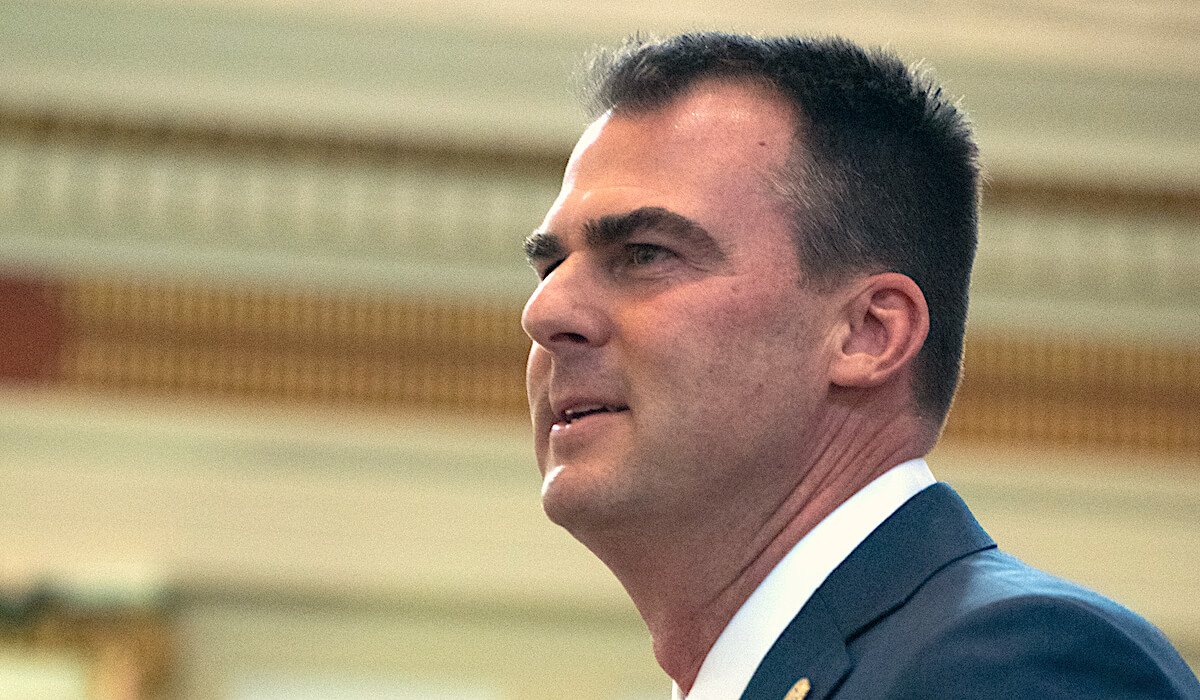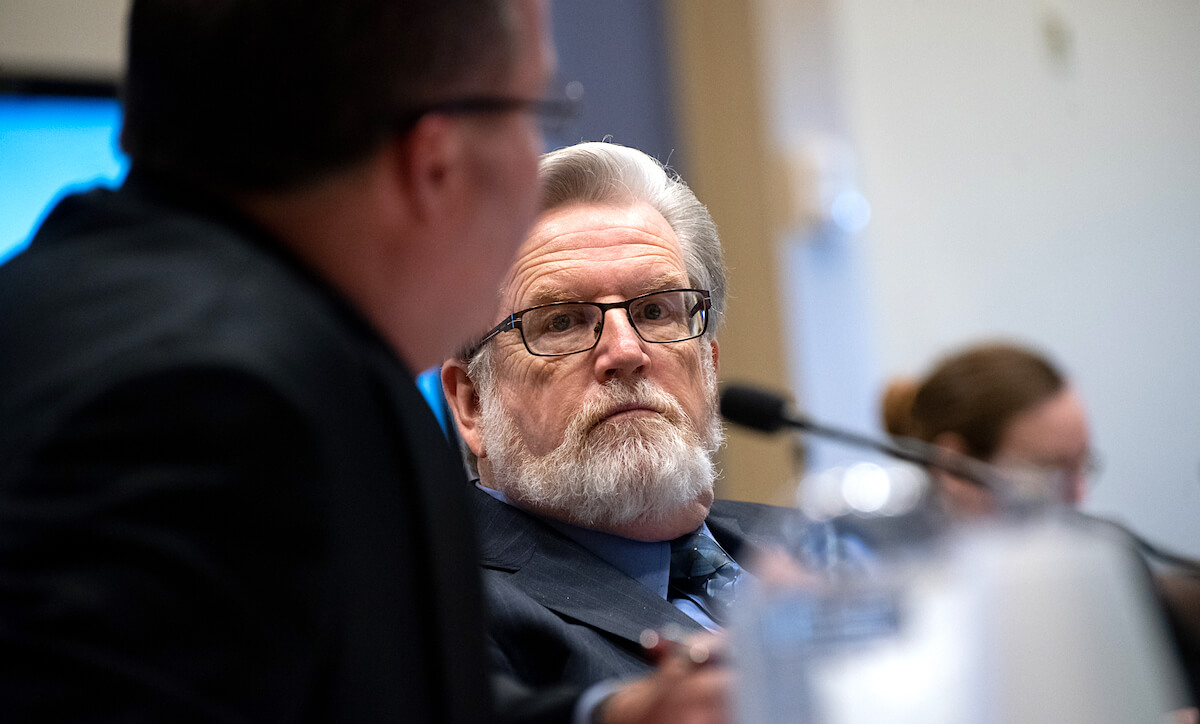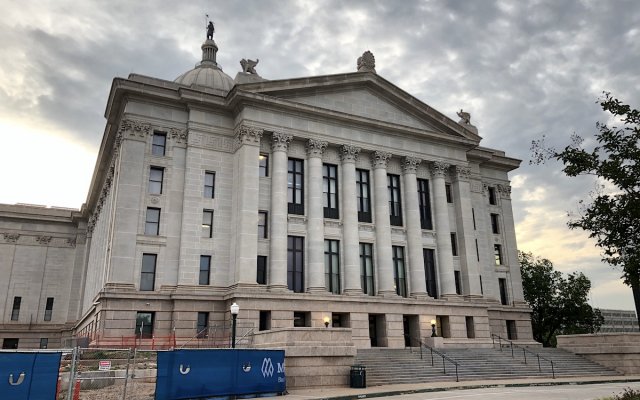
Despite affirming its AA rating on Oklahoma’s general creditworthiness, S&P Global Ratings has revised its judgment of the state’s fiscal picture to a “negative outlook” and says there is a one-in-three chance that Oklahoma’s bond rating drops in coming quarters.
A leading index provider and data source of independent credit ratings formerly known as Standard & Poor’s, S&P Global Ratings has issued dozens of negative outlooks and downgrades in recent weeks for institutions and governmental entities across the country and around the globe.
“The state is likely to grapple with considerable budget uncertainty due to a steep decline in revenue collections — including a declared revenue failure of 6 percent, or $416.7 million, for the remainder of [Fiscal Year 2020],” S&P Global Ratings credit analysts Thomas Zemetis and Oscar Padilla wrote in a document outlining the organization’s analysis. “While the [Fiscal Year 2020] revenue failure alone, in our view, is similar in scale to revenue shortfalls declared in [Fiscal Year 2016 and Fiscal Year 2017], Oklahoma is likely to be more vulnerable to this national economic recession, due to the indirect economic fallout from COVID-19 and the significant supply and demand imbalance in global energy markets. Both events are likely to weigh heavily on Oklahoma’s finances relative to other states, which could widen these near-term structural gaps and materially weaken liquidity and reserves.”
In April, S&P revised New Jersey’s outlook and Illinois’ outlook from “stable” to “negative,” but Zemetis and Padilla said those states are “two of our lower-rated credits.” They said Nevada and Hawaii received outlook revisions owing predominantly to tourism disruption, and they said Alaska received a downgrade and an outlook revision. Owing to Alaska’s reliance on the energy industry, they said it most mirrors Oklahoma’s situation.
“I think a large part of our focus right now is certainly understanding how states are grappling with a response to the public health crisis,” Zemetis told NonDoc in a phone interview. “In response to that, we are seeing that states are experiencing both unprecedented challenges being able to provide that medical support, but also that it is affecting state budgets and finances.”
S&P’s official analysis of the state, its appropriations, its general obligations, the Oklahoma Capitol Improvement Authority and the Oklahoma Development Finance Authority is embedded below. (The OCIA and ODFA provide loans for state and local projects.)
Stitt spokesman: S&P ‘draws same conclusions as the governor’

S&P’s document references the culminating debate about Oklahoma’s Fiscal Year 2021 budget, which Gov. Kevin Stitt is expected to sign, veto or line-item veto later today.
“We’ve had a double whammy (to our economy),” Stitt said Monday. “Not only the COVID-19, but also the oil and gas (situation). “We’ve talked to the oil and gas experts who think it is going to be closer to 2022 (…) before that recovers.”
In making those remarks, Stitt announced he intends to veto two budget bills, which would temporarily reduce pension deposits and redirect that money to common education funding to avoid cuts to schools. Legislators have said those bills are critical to avoiding common education cuts, but on Tuesday the governor reiterated his plan to veto them.
“I’m not going to put my signature to a budget that is going to cause us problems not only this year but when we get back in here in nine months,” Stitt said Tuesday. “Because you know what the conversation is going to be in nine months? Tax increases. And I’m not going to do that on hard-working Oklahomans. But that is going to be the first thing the Legislature is going to have to start dealing with.”
The S&P analysis referenced the challenge of raising revenue in Oklahoma.
“The state has faced persistent challenges in generating and consistently growing recurring revenue under better economic conditions to prepare for recessions,” analysts wrote. “Complicating revenue reforms, in our view, are constitutional requirements for revenue-raising legislation to be approved by a three-fourths supermajority of both houses of the state Legislature or by voters. Alternatively, Oklahoma has turned to one-time revenue solutions, agency funding cuts and reserve use to narrow structural gaps, particularly when economically sensitive revenues (i.e. sales, income and gross production taxes) fall sharply.”
While Stitt said in his 2018 campaign that he would have vetoed the historic revenue-raising package passed by the Legislature that year to raise teacher pay and fund state government, Stitt echoed the concern Monday about “one-time” funds being relied upon for the Fiscal Year 2021 budget.
“They are pulling $931 million to plug a funding gap and spend that money this year. What do you think is going to happen [next year]?” Stitt said. “It’s going to be a cliff we are falling off of.”
Zemetis and Padilla said Oklahoma’s challenges with the COVID-19 pandemic and economic slowdown are not unique.
“Our negative outlook certainly reflects that there were certain revenue shortfalls,” Zemetis said.
Their document offered nine pages of deeper analysis, particularly on the added challenge of a historic energy sector slowdown.
“Although the state has worked to diversify its employment and industry composition, nearly 12.5 percent of its total gross state product comes from mineral and related chemical production,” analysts wrote. “The sharp downturn is likely to affect regions within the state with concentration in oil and gas activities first and will then invariably constrain growth in downstream machinery and metal manufacturing and other service activity for the state as a whole, if prolonged.”
Tuesday, Stitt noted that only 13 oil and gas rigs are operating in the state currently, compared to more than 100 a year ago. The Stitt administration pointed to that situation and the S&P document as validity of the governor’s state budget concerns.
“International credit analysts are coming to the same conclusions as the governor: that Oklahoma’s economy is vulnerable due to the fallout from COVID-19 and the drop in energy prices, and that relying on one-time funds to balance the budget instead of making structural adjustments is not a sustainable strategy,” said Charlie Hannema, chief of communications for Stitt. “S&P notes that Oklahoma’s pension funded levels, which have historically constrained our state’s credit rating, have improved significantly in recent years. As the governor has stressed to Oklahomans, it does not make financial sense to take money away from our pension systems to fund budget shortfalls.”
‘Debt burden remains among the lowest of the U.S.’

The S&P document does praise Oklahoma’s “low debt metrics” compared to other states with higher reliance on bond financing.
“Although Oklahoma’s economic and financial indicators will experience more variability during the current recession compared with those of more highly rated peers, the state’s debt burden remains among the lowest of the U.S., while its pension funding has improved,” analysts wrote.
Lawmakers have sent Stitt a bill bonding $200 million for transportation projects (which allows General Revenue Fund dollars to limit cuts for other state agencies), as well as a $161 million bond to fund endowed chairs for higher education institutions. Add in $48 million for state parks and $16 million for a Department of Human Services facility in Garfield County, and the Legislature is authorizing $425 million in future bond projects this session.
“Interest rates are low,” said Senate Appropriations and Budget Chairman Roger Thompson (R-Okemah). “The tourism bond — we get our state parks caught up to date. It puts people to work, which we need jobs now. It also creates an economic incentive for people to come to Oklahoma and spend money. So I think that’s a great thing on tourism.”
Thompson noted that the higher education bonds are not effective until 2021 and said the transportation bonds “are good investments” that provide flexibility during the economic crisis.
“That keeps the eight-year plan right on target. We have done this in the past. We have bonded out some construction projects, and we are able to use our cash. So all of those things we believe are good for Oklahoma,” he said. “We want to make sure the state stays fiscally healthy, and by doing that we need to be able invest in the state.”
The S&P analysis also discussed Oklahoma’s seven pension systems and said the state’s three-year average pension funded ratio is “good.”
“We do not view pension liabilities as an immediate source of credit pressure for Oklahoma as its aggregate funding levels have improved to 81.6 percent in 2019 from 55.9 percent in 2010, and our expectation that costs will remain sustainable over the near-term,” analysts wrote.
Thompson said that stability was a factor in deciding to temporarily redirect some pension deposits to the state’s overall education funding in the budget sent to Stitt’s desk.
“When the governor vetoes those two bills today, he is cutting education $111 million. I believe he knows that,” Thompson said. “I believe we’ve got a good budget. I was on the phone with one of our superintendents today commending our budget for protecting state schools.”
Still, S&P analysts emphasized “weakness” in Oklahoma’s overall economy.
“While Oklahoma is entering the current recession with more financial flexibility compared to the Great Recession and previous energy sector downturns, we also recognize that it will be operating under a high level of fiscal uncertainty and credit deterioration could occur more rapidly for energy dependent states in the current economic environment,” analysts wrote. “Weaknesses in the state’s economy due to its efforts to mitigate the health and safety risks posed by the pandemic are likely to be amplified by economic repercussions tied to low commodity prices that will invariably affect Oklahoma’s oil sector and ancillary industries. This, in our view, could extend revenue shortfalls and structural budget gaps over the outlook horizon, even as the rest of the nation begins to recover.”





















